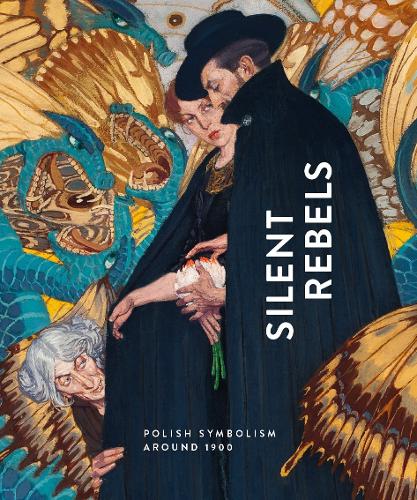
Silent Rebels: Symbolism in Poland around 1900
(Hardback)
Publishing Details
Silent Rebels: Symbolism in Poland around 1900
By (Author) Roger Diederen
Edited by Albert Godetzky
Contributions by Nerina Santorius
Hirmer Verlag
Hirmer Verlag
20th November 2022
16th June 2022
Germany
Classifications
General
Non Fiction
Paintings and painting
759.38
Physical Properties
Hardback
272
Width 240mm, Height 290mm
1900g
Description
A discovery: Polish Symbolism between decadence and a new beginning The turn of the century was a golden age for Polish art. The publication shows about 130 masterpieces of painting from this era between decadence and a new beginning and describes its roots in Polish history, culture and nature as well as the close connections with the European art scene. Polish painting in around 1900 carries us into a world of myths and legends, into dream-like landscapes, old traditions and customers, into the depths of the human soul. In a nation without its own state - until its independence in 1918 Poland was divided between Russia, Prussia and Austria-Hungary - a young generation of artists emerged to renew painting. They gave it a common identity, but joined forces at the same time with the European avant-gardes. Artists featured: Teodor Axentowicz, Olga Boznaska, Jzef Chemoski, Wadysaw Czachrski, Julian Faat, Wojciech Gerson, Aleksander Gierymski, Gustaw Gwozdecki, Vlastimil Hofman, Wadysaw Jarocki, Konrad Krzyanowski, Jacek Malczewski, Jan Matejko, Jzef Mehoffer, Edward Oku, Jzef Pankiewicz, Wadysaw Podkowiski, Witold Pruszkowski, Ferdynand Ruszczyc, Kazimierz Sichulski, Wadysaw lewiski, Kazimierz Stabrowski, Jan Stanisawski, Henryk Szczygliski, Wodzimierz Tetmajer, Wojciech Weiss, Stanisaw Witkiewicz, Witold Wojtkiewicz, Leon Wyczkowski, Stanisaw Wyspiaski
Author Bio
Roger Diederen studied art history and archaeology at the University of Amsterdam from 1984 to 1990 with a focus on 17th century Dutch art. From 1990 to 1991 he worked at the Research Centre of the J. Paul Getty Museum, Los Angeles and from 1991 to 1994 he worked in the Kupferstichkabinett of the Rijksmuseum in Amsterdam. In 1993 he was a fellow of the European Paintings department at the Metropolitan Museum of Art, New York. From 1994 to 2000 he was a research fellow at the Cleveland Museum of Art, where he mainly worked on the inventory of 19th century European paintings. As a curator at the Dahesh Museum of Art, New York, he organized exhibitions in the field of art of the 19th century. In 2006 he moved to the Kunsthalle of the Hypo-Kulturstiftung in Munich as a curator, where he has been director since 2013.
